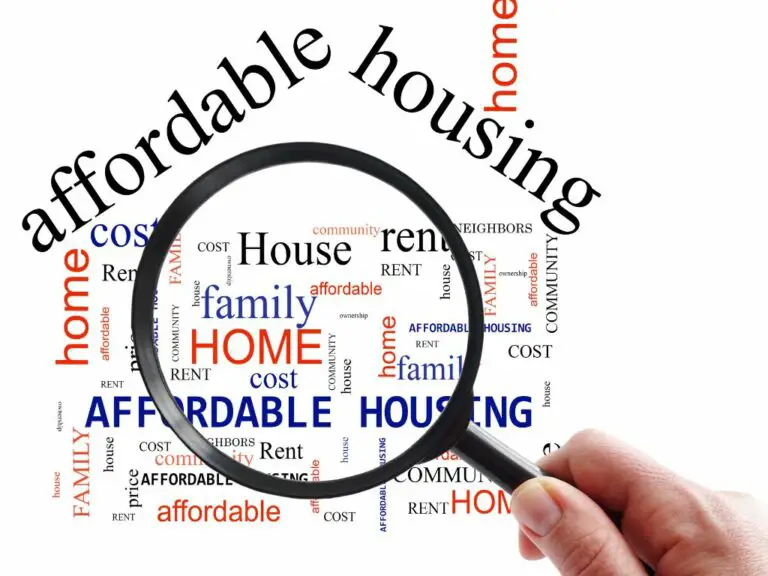Section 8 for Seniors in California: Eligibility, Benefits, and Application Process
In California, federal rental assistance plays a crucial role in supporting seniors who are struggling to afford housing.
Currently, there are 1,046,600 individuals in 536,000 California households benefiting from federal rental assistance, allowing them to afford modest housing. Of these households, 68% consist of seniors, children, or people with disabilities.
For the seniors in California, rental assistance programs have a significant impact. Approximately 26% of assisted individuals are seniors, and this assistance enables 275,400 seniors to age in place. 28% of those receiving rental assistance have a disability, benefiting 290,500 individuals with disabilities in California, allowing them to live independently.
Various rental assistance programs are available in California, including Section 8 Housing Choice Vouchers, Section 8 Project Housing, public housing, and subsidized housing for elderly and disabled individuals.
It is important to note that the income requirements for eligibility differ based on income brackets, with more than 75% of housing vouchers awarded to extremely low-income applicants.

What Is Section 8 for Seniors in California?
Section 8 housing vouchers provide crucial assistance to seniors in California by helping to alleviate housing costs. Administered locally by public housing agencies (PHAs), these vouchers are funded by the U.S. Department of Housing and Urban Development (HUD).
The amount of housing assistance received by participating seniors is determined by the local PHA, which then directly pays the landlord on their behalf. Seniors are responsible for covering the remaining balance of the rent. HUD specifies that participating seniors must contribute at least 30% of their monthly income towards rent and utilities.
In California, the PHA categorizes income levels into low-income, very low-income, and extremely low-income brackets.
To qualify for Section 8 housing assistance in the state, seniors’ combined household income must be below 80% of the median income in their area.
Low-income applicants earn 80% or less of the area median income, very low-income applicants earn less than 50% of the area median, and extremely low-income applicants earn less than 30% of the area median.
Over 75% of all housing vouchers are awarded to applicants falling within the extremely low-income bracket.
To determine eligibility, seniors can visit the HUD website and access this information.
How Can Seniors Qualify for Section 8 in California?
To qualify for Section 8 housing in California as a senior citizen, certain criteria must be met. Seniors aged 62 and above must have an annual household income that does not exceed 80% of the area median income. However, they may be eligible if they have special needs or disabilities. Approval for individuals with a criminal record is determined on a case-by-case basis.
Applicants for low-income housing in California must also fulfill specific requirements.
- Applicants must be U.S. citizens or legal resident aliens with eligible immigration status.
- They must not have outstanding debts exceeding $1,500 in total (or $100 per month) owed to the federal government or other public agencies.
- Within the past five years, they must not have been convicted of any felony or any drug-related crime within the past three years.
The income limits set by the Department of Housing and Community Development (HCD) are based on federal and state guidelines, usually derived from surveys of local area median income (AMI).
Income categories for housing programs range from extremely low income (not exceeding the federal poverty level or 30% of AMI) to very low income (50% of AMI) and low income (80% of AMI). The determination of eligibility and assistance percentages is based on these income limits.
The State of California implements a Hold Harmless Policy to maintain higher prior-year income limit figures for affordable housing programs. This policy supports the objective of preserving and expanding the supply of affordable rental housing. It benefits households with different income levels, including seniors, who rely on affordable housing providers that comply with Health and Safety Code income limits and affordable rent criteria.
Overall, seniors in California can qualify for Section 8 and low-income housing programs by meeting specific income thresholds, citizenship or immigration status requirements, and other eligibility criteria.
It’s important to note that meeting the eligibility requirements does not guarantee receiving Section 8 assistance, as demand often exceeds available funding.
What Benefits Do Seniors Receive from California Section 8 Program?
The California Section 8 (Housing Choice Voucher) Program provides numerous benefits to eligible seniors who are in need of affordable housing.
Here are some of the benefits that seniors receive from the California Section 8 Program:
Increased Household Budget
One of the primary benefits seniors receive from the California Section 8 Program is an increased household budget. By providing a housing subsidy directly to the landlord, the program allows seniors to allocate a larger portion of their limited income to other essential needs, such as healthcare, medication, nutritious food, and utilities.
Access to Lower Rental Rates
Through the Section 8 Program, seniors gain access to lower rental rates. The program subsidizes a significant portion of the rent, making it more affordable for seniors with limited financial resources.
This ensures that seniors can find suitable housing options within their means and reduces the burden of high housing costs, which can be a major challenge for seniors on fixed incomes.
Affordable Housing
In order to provide affordable housing, the California Section 8 Program targets households with incomes considerably lower than the area’s median income, with a significant focus on extremely low-income individuals.
Seniors who fall within the extremely low-income category, earning less than 30% of the area’s median income, are given priority for the vouchers. This emphasis on affordability helps seniors secure housing that aligns with their financial capabilities.
Access to Quality Housing and neighborhoods
California’s Section 8 Program has minimum health and safety standards that housing units must meet, ensuring that seniors are provided with safe and habitable living conditions. This enables seniors to reside in communities that offer a better quality of life, including amenities, services, and a supportive environment.
Support and Services
The California Section 8 Program offers support and services to seniors, aiming to enhance their overall well-being. Seniors may have access to resources such as case management, counseling, and referrals to community services.
These support services are designed to address the unique needs of seniors, including healthcare assistance, transportation, and social activities, promoting a higher quality of life for program participants.
How Do Seniors in California Apply for Section 8?
Navigating the application process for California Section 8 Housing involves assessing eligibility, locating the local PHA, completing the application, attending an interview, and patiently waiting for approval. Although the waiting list may present challenges, the program can ultimately provide seniors with financial assistance to secure safe and suitable housing.
The first step to apply for Section 8 in California is to identify the local Public Housing Authority (PHA) responsible for administering the Section 8 program in the area. This can be done by visiting the Department of Housing and Urban Development (HUD) website or contacting HUD directly at (800) 955-2232.
Each of California’s 57 counties manages its own Section 8 housing program application waiting list, making it essential to reach out to the nearest housing authority for accurate and up-to-date information.
Once the local PHA is identified, seniors must fill out the Section 8 application accurately and thoroughly. The application typically requires information about income, assets, and living arrangements. Supporting documents such as pay stubs, tax returns, and bank statements should be provided to strengthen the application.
After submitting the application, seniors will be invited for an interview with a PHA representative. During the interview, the representative will inquire about various aspects, including income, living situation, and other factors affecting eligibility for the program.
Following the interview, the PHA will assess the application and determine whether the senior qualifies for assistance. Due to the limited funding and resources available, there might be a waiting list for approved applicants. The duration of the waiting period can vary significantly, lasting for months or even years, depending on the demand for the program.
To remain on the Section 8 housing waiting list, seniors should maintain close communication with the local housing authority. Regularly updating the authority about any changes in residence, income, or household is crucial to avoid being dropped from the waiting list. Failure to respond to correspondence or provide necessary information promptly can lead to removal from the list.
Seniors who have received confirmation of acceptance onto the waiting list can periodically check their status. This can be done by contacting the local housing authority and providing the assigned client number mentioned in the acceptance letter. Alternatively, applicants can inquire about their status with landlords participating in the Section 8 program or submit an online inquiry through the housing authority’s website.
Navigating the application process for California Section 8 Housing involves assessing eligibility, locating the local PHA, completing the application, attending an interview, and patiently waiting for approval. Although the waiting list may present challenges, the program can ultimately provide seniors with financial assistance to secure safe and suitable housing.
What Documentation Will Seniors Need to Provide When Applying for Section 8 in California?
When seniors in California apply for Section 8 Housing, they need to provide specific documentation to support their application. The documentation requirements include proof of age, citizenship or legal residency, and income verification.
Seniors must provide proof of their age, as Section 8 Housing is available to individuals who are 62 years old or older. This can be done by submitting:
- a copy of their birth certificate,
- driver’s license,
- passport, or
- any other official document that verifies their age.
Seniors must also establish their citizenship or legal residency status. They will need to provide documentation such as:
- a U.S. passport,
- certificate of naturalization,
- permanent resident card (Green Card), or
- other relevant immigration documents.
This is to ensure that the program is available to U.S. citizens, legal residents, and mixed families with eligible immigration status.
Seniors must provide income verification to demonstrate their financial eligibility for Section 8 Housing. This typically involves submitting:
- recent tax returns,
- pay stubs,
- any government assistance they receive, or
- other documents that show their sources of income.
The income verification process helps determine whether the senior’s household income falls within the income limits set by the program.
By providing these necessary documents, seniors in California can complete their application for Section 8 Housing and be considered for assistance. Seniors should gather and organize these documents in advance to streamline the application process and increase their chances of approval.
What Are the Rental Limits for Section 8 in California?
In California, the rental limits for Section 8 housing assistance programs are determined based on the income of eligible residents. These limits are set by both federal and state regulations. The U.S. Department of Housing and Urban Development (HUD) periodically revises the federal income limits, which are used as the basis for the state limits.
The income categories for eligibility include acutely low income (0-15% of the local area median income), extremely low income (15-30% of the local area median income), very low income (30-50% of the local area median income), lower income (0-80% of the local area median income), and moderate income (80-120% of the local area median income).
In California, the definition of “affordable housing cost” for lower-income households is not more than 30% of their gross household income, as specified by the State law. This includes various expenses such as rent or mortgage payments, utilities, and property taxes and insurance for owner-occupied housing.
The objective of the income limits is to ensure that affordable rental housing is available to households with different income levels, in line with the requirements of the Health and Safety Code.
FY 2023 Section 8 Income Limits
| Number of Persons | Extremely Low Income 30% of Median | Very Low Income 50% of Median | Low Income 80% of Median |
| 1 | $ 26,500 | $ 44,150 | $ 70,650 |
| 2 | $ 30,300 | $ 50,450 | $ 80,750 |
| 3 | $ 34,100 | $ 56,750 | $ 90,850 |
| 4 | $ 37,850 | $ 63,050 | $ 100,900 |
| 5 | $ 40,900 | $ 68,100 | $ 109,000 |
| 6 | $ 43,950 | $ 73,150 | $ 117,050 |
| 7 | $ 46,950 | $ 78,200 | $ 125,150 |
| 8 | $ 50,560 | $ 83,250 | $ 133,200 |
To preserve and increase the supply of affordable rental housing, the California Department of Housing and Community Development (HCD) implemented a State Hold Harmless Policy in 2013. This policy is similar to the former Hold Harmless Policy of HUD, which prevents decreases to county area median income and household size income limit figures when updating Section 8 income limits annually.
HCD adjusts any decreases in the current year’s income limits to retain higher figures from the prior year. By implementing this policy, the state aims to support affordable housing providers and benefit a broader public.
For senior individuals in California seeking Section 8 assistance, the eligibility criteria are the same as for other households. The household must have income that does not exceed the area limits established by HUD.
The income limits for seniors in the Los Angeles area, for example, are based on family size and categorized as follows: extremely low income (income not exceeding the higher of the federal poverty level or 30% of area median income), very low income (50% of area median income), and low income (80% of area median income).
What Are the Different Types of Section 8 Housing Programs in California?
The two main types of Section 8 housing programs in California are tenant-based and project-based. Tenant-based assistance, or the Housing Choice Voucher Program, provides vouchers to low-income tenants to help pay their rent to any approved landlord. Project-based assistance provides reduced rent on specific properties, with the property owner or manager handling logistics.
The Housing Choice Voucher Program, also known as tenant-based housing assistance, provides low-income seniors with vouchers to help pay their rent to any approved landlord. However, it’s important to note that there are often long wait lists, sometimes spanning several years, for properties accepting these vouchers.
Once a unit becomes available, seniors in the program contribute a portion of their adjusted gross income towards rent, typically around thirty to forty percent, while the Housing Authority covers the remaining amount.
The second type of Section 8 housing program available for seniors is Project-Based Section 8 housing. This assistance is tied directly to specific properties, such as apartment complexes, that meet minimum quality standards. Aid organizations maintain lists of properties participating in the Project-Based assistance program.
Unlike tenant-based housing, seniors in this program do not have a case manager; instead, the property owner or manager handles the logistics. Although wait-lists for Project-Based housing tend to be shorter than those for tenant-based housing, the availability of low-income housing in both programs is limited.
Is There Any Support Network for Seniors in California Who Receive Section 8 Assistance?
Seniors in California who receive Section 8 assistance have access to a support network that includes reporting mechanisms for:
- housing discrimination,
- protections against retaliation,
- assistance for disabilities and limited English proficiency,
- investigations by HUD’s FHEO, and
- a collaborative framework involving tenants, landlords, housing agencies, and HUD.
The Department of Housing and Urban Development (HUD) plays a crucial role in overseeing the Section 8 program and providing assistance to eligible individuals. Here is an overview of the support available to seniors in California:
Reporting Housing Discrimination: Seniors who encounter housing discrimination can report it through various channels. They can submit online reports through the HUD website, available in both English and Spanish. Alternatively, they can download a form in multiple languages, including Arabic, Chinese, Khmer, Korean, Russian, Somali, Spanish, and Vietnamese, and send it via email or regular mail to their local HUD office.
Retaliation Protections: It is important for seniors to know that retaliation for reporting discrimination is illegal. The Fair Housing Act prohibits any form of retaliation against individuals who make allegations, testify, or participate in HUD’s allegation process. Seniors who experience retaliation can report it as housing discrimination.
Assistance for Persons with Disabilities: HUD offers support for seniors with disabilities, ensuring reasonable accommodations and auxiliary aids and services. A toll-free teletypewriter (TTY) line is available for individuals with hearing impairments at 1-800-877-8339.
Assistance for Persons with Limited English Proficiency: Seniors with limited English proficiency can report housing discrimination in their preferred language. HUD provides interpreters to facilitate communication. Additionally, there is a Spanish language version of the online report housing discrimination form. Fair housing rights are also available in multiple languages.
HUD’s Office of Fair Housing and Equal Opportunity (FHEO) investigates allegations related to housing discrimination. This includes discrimination under the Fair Housing Act for privately owned and operated housing, as well as discrimination and civil rights violations in housing and community development programs funded by HUD.
Seniors receiving Section 8 assistance are part of a collaborative effort involving tenants, landlords, housing agencies, and HUD. Each party has specific obligations and responsibilities. Tenants must comply with the lease and program requirements, pay rent on time, maintain the unit, and report any changes.
Landlords must provide safe and sanitary housing, meet housing quality standards, and deliver agreed-upon services. Housing authorities administer the voucher program, provide assistance, and conduct regular inspections. HUD funds the program and monitors its administration.
This comprehensive support system aims to ensure seniors can enjoy their housing rights and maintain a high quality of life.







